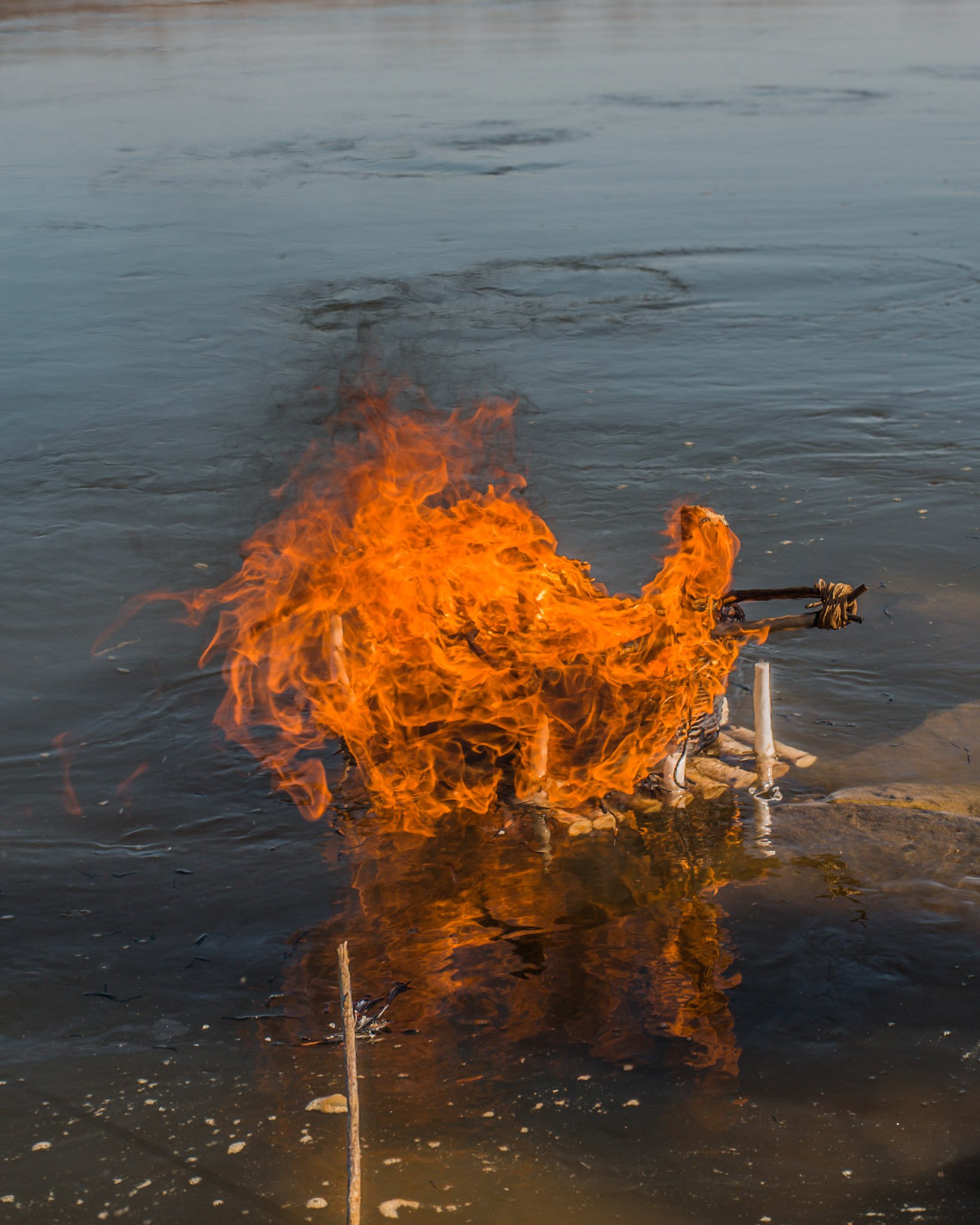
Togaether, vanish
Togaether
Venue Vanish (mobile gallery)
Date March 21, 2022
Curated by Konrad Smoleński
Photography Konrad Smoleński






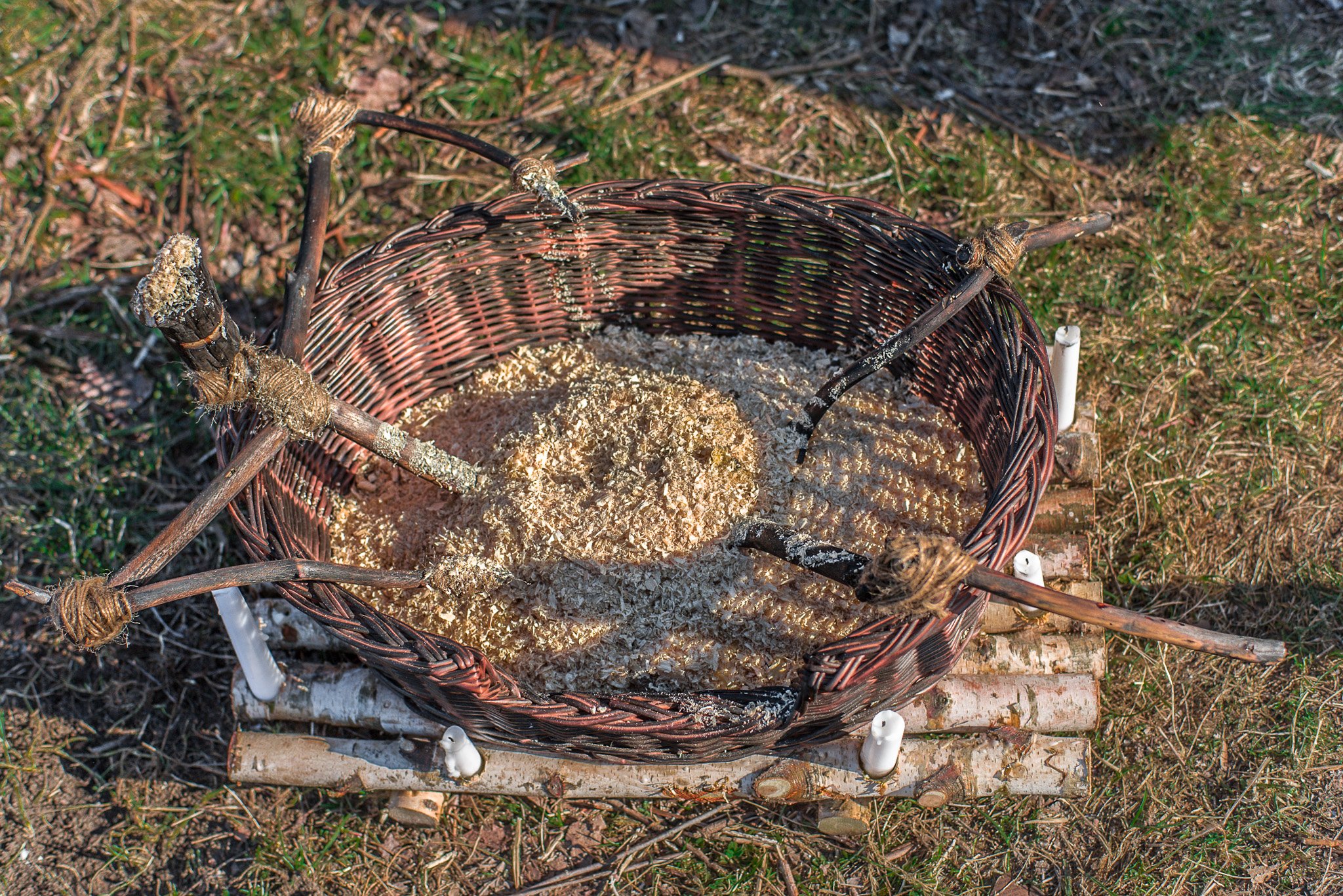


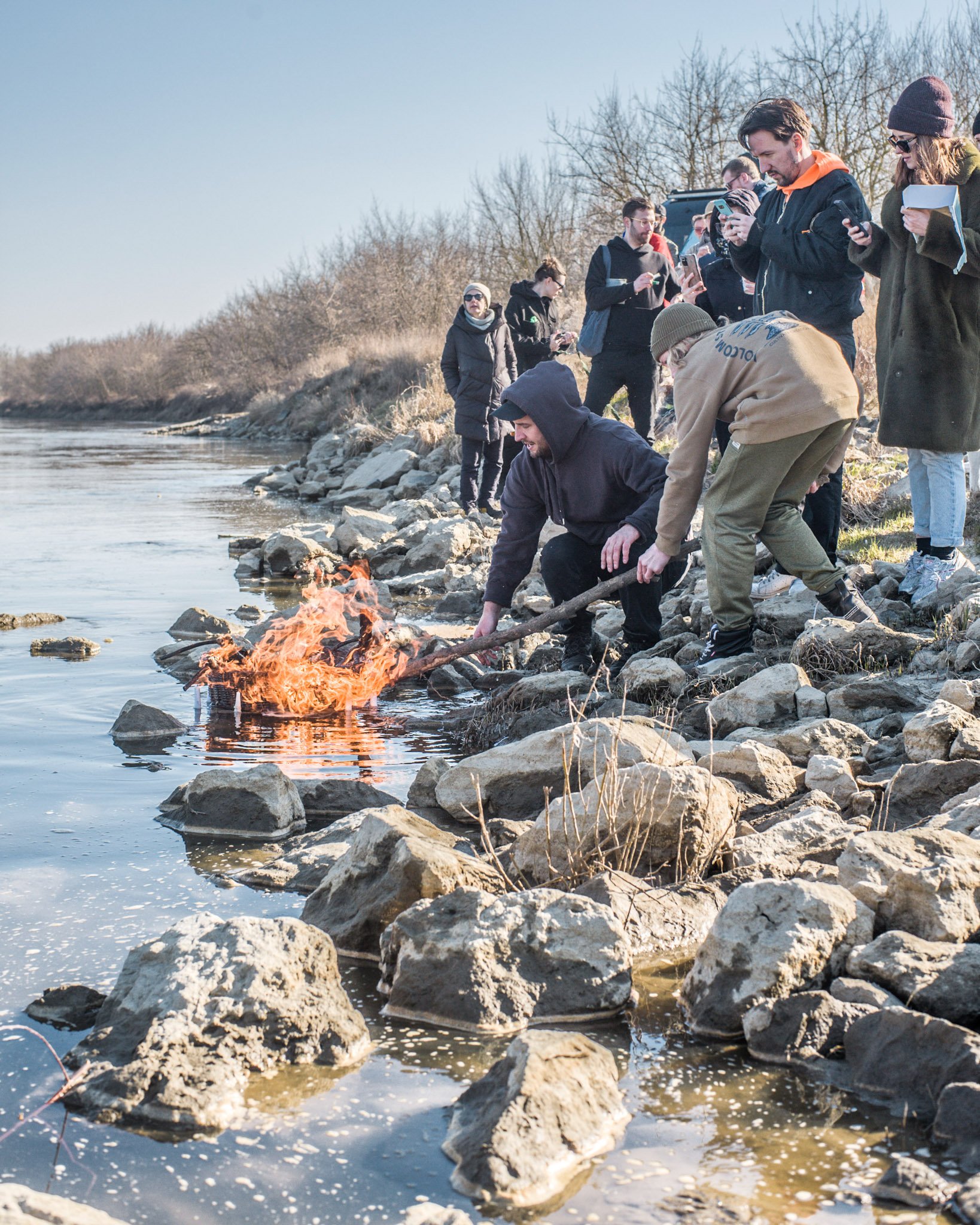
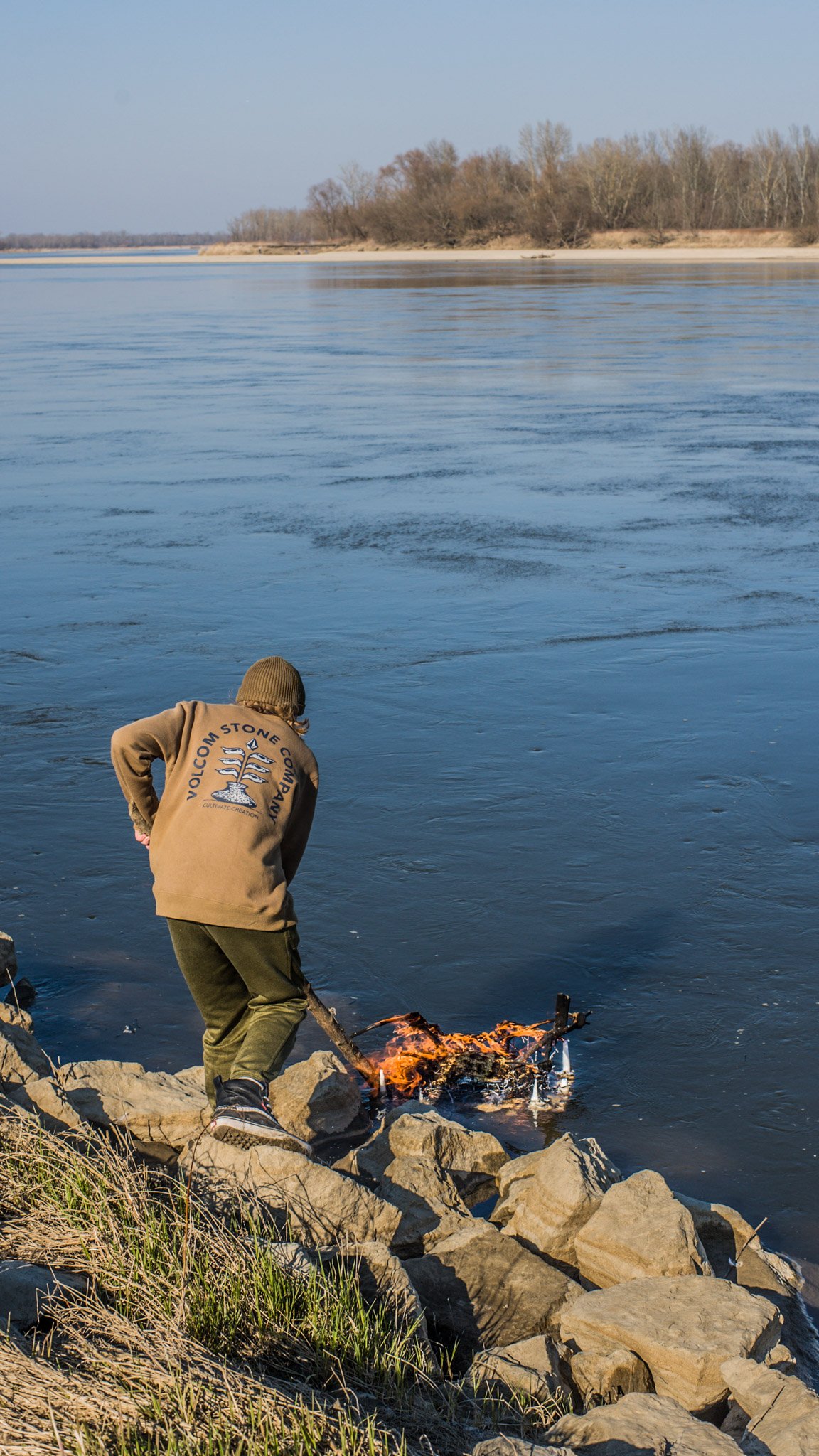


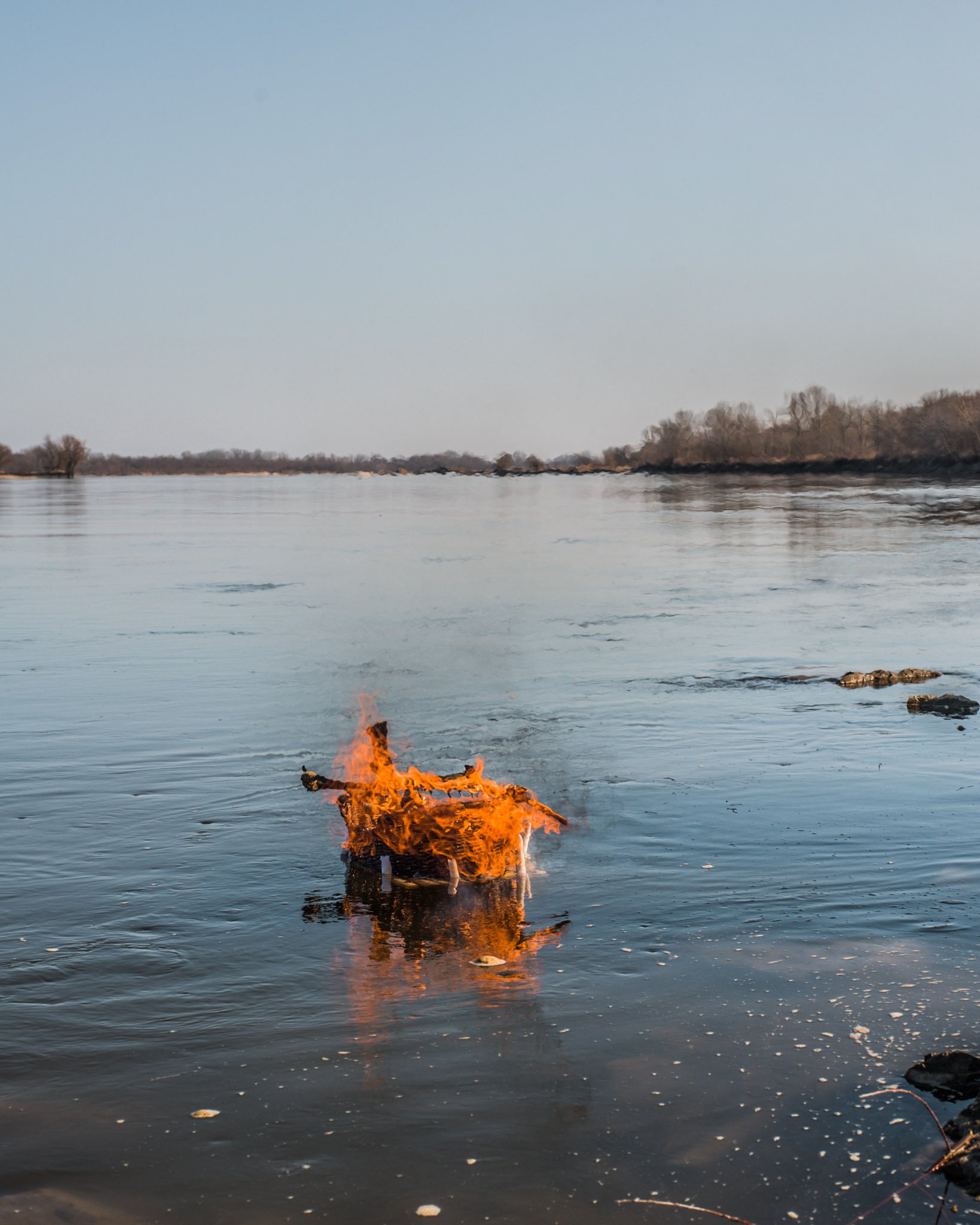
Press Release
Cezary Poniatowski drowns the deity of death.
The first gathering of Vanish gallery initiating Season 22 was supposed to take place unattended, nevertheless we had the company of a handful of friends as well as great weather, an excellent selection of Ukrainian poems and a procession that ended with setting fire to and drowning Cezary's sculpture. The statue was made of wood, jute strings, candles and wood shavings.
Marzanna (or the male form Marzaniok) is the name of a dummy representing a goddess that was ritually burnt or drowned during the Spring Feast of in order to invoke spring. This custom, rooted in sacrificial rites, was supposed to ensure fertility in the coming year. According to the principles of sympathetic magic described by James Frazer, it was believed that killing a figure representing the goddess of death would simultaneously result in the cancellation of the effects caused by it and the arrival of spring.
There are still various superstitions connected with drowning Marzanna: it is forbidden to touch the effigy floating in the water, as this may cause your hand to wither, looking back on the way out may make you ill, and if you stumble and fall, you will die within the next year.
Christianity tried to ban this old Slavic custom. In 1420, the Synod of Poznan ordered the clergy: "Do not allow the pagan custom of carrying away some figure, which they call death and drown in a puddle, to take place on Sunday." However, the native tradition proved stronger. As a result, at the turn of the 17th and 18th centuries an attempt was made to replace the tradition of drowning Marzanna (on the Wednesday before Easter) by throwing a puppet symbolising Judas from the church tower, which also ended in failure. Currently in Poland, the ritual is associated with the arrival of the calendar spring on 21 March or with the Spring Festival, which falls during this period.
About Vanish
What?
Vanish is a mobile art gallery housed on the flanks of a MB W903 vehicle. The van serves as a canvas for paintings/drawings/screenings, but primarily as a platform for meetings and discussions with artists, collectors, curators, and the general public. The vehicle is equipped with the necessary facilities for people to spend time in any remote location.
How?
At the disposal of the invited artists are two 184x63cm panels, from which the works are permanently erased at the end of the exhibition. The only remnants of the artwork will be visual documentation and catalogued jars of leftover sanded paint powder. Instead of buying works, collectors can book time with the artist and/or curator at a location of their choice accessible by a gallery vehicle.
Why?
The gallery’s aim is to redirect the focus from product to relationship by destroying the artworks created within the projects, and using them as a pretext for meetings and discussions. This approach stems from the belief that the language of art is adversely affected by the mechanisms of the art market. Our aim is to erode this pattern and Vanish is our platform to do that.
When?
The gallery started on June 1st, 2021. The first vernissage (Opening of the first Season) is scheduled for the spring equinox in 2022. Dates available for booking are scheduled during the summer/fall. A change of main exhibition takes place once or, at most, twice a year, however, other ephemeral artistic activities will be held at that time.
Where?
The gallery is in motion, yet often anchored in Warsaw (PL).
Who?
The gallery does not represent artists on a permanent basis. We focus on the temporary nature of activities and relationships created in the community. The gallery is run by Konrad Smolenski – an artist based in Bern CH and Warsaw PL (konradsmolenski.com). The graphic design of the project is carried out by Daniel Szwed (moonmadness.eu).Vehicle maintenance is ensured by Maxim Zaitsau and Sasha Nekhin from Neutral Service.
Vanish, Warsaw, March 2022
